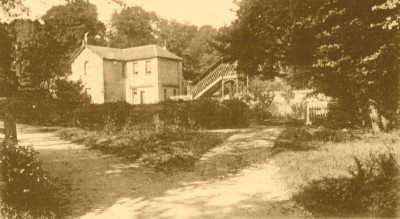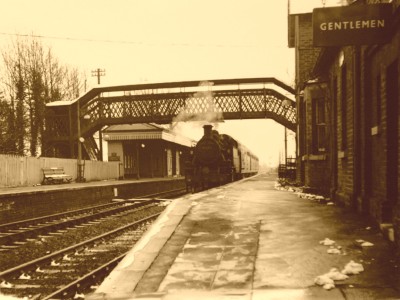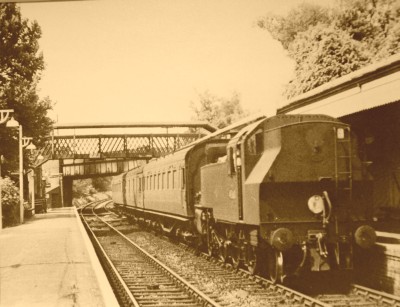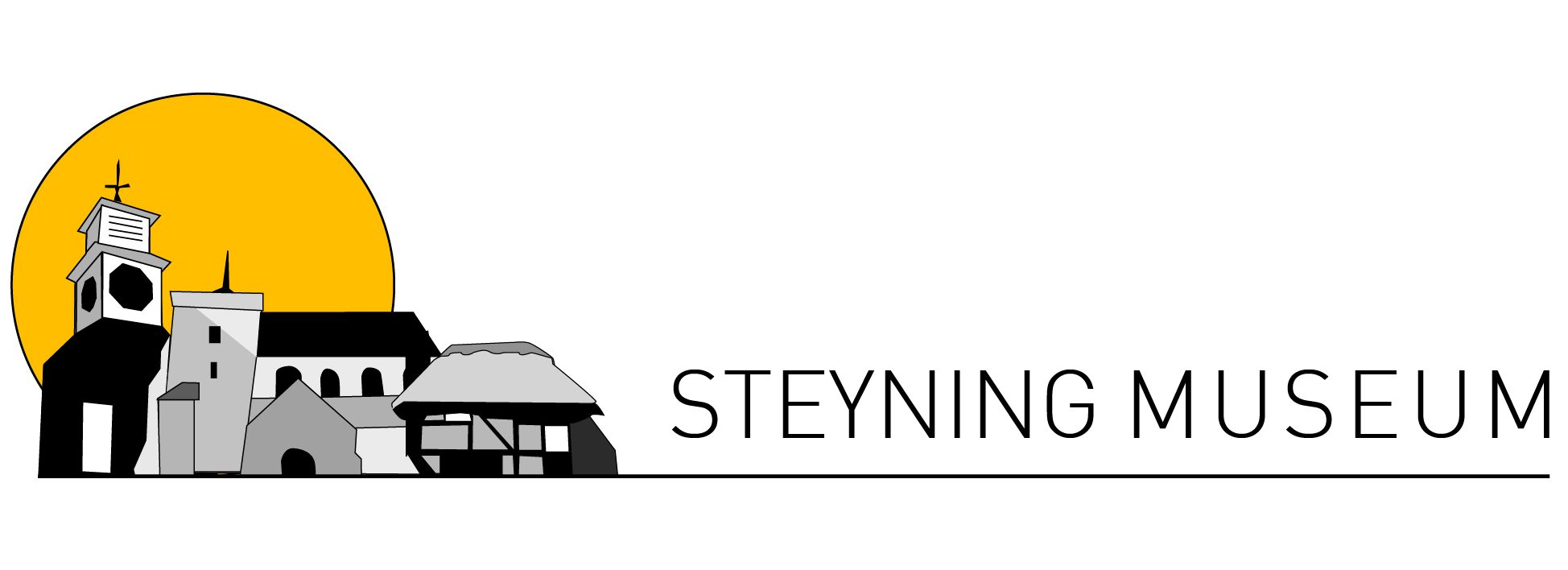with Michael Portillo
Michael Portillo revived the popularity of a Victorian railway guide in his television show, Great British Railway Journeys. George Bradshaw’s guide claimed Bramber was a place of no particular note, beyond the remains of a Norman castle. Michael Portillo asked why it was, then, that tourists were soon flocking to the village.

Chris Tod, who was the Curator of Steyning Museum, often helped media researchers with information about the local area. A researcher for Michael Portillo’s BBC television show, Great British Railway Journeys, rang the museum and Chris was happy to discuss the village of Bramber.
The good news was that Michael was planning to visit Bramber in 2013, prompted by the famous Victorian railway guide book written by George Bradshaw. Then the show’s researcher asked whether Chris would be willing to meet Michael for an interview to camera. Chris gulped and said, “Yes”.
“I was slightly nervous,” Chris admitted. “In fact Michael and his small team were charming and very professional. They put me at my ease immediately.
“The interview was on Saturday, August 10th, on a lovely summer evening up at Bramber Castle. The whole team were staying at the Castle Inn Hotel in Bramber and all arrived together in a minibus. They were an impressive bunch and Michael Portillo was very focused.
“I was so relieved when one of my iffy answers didn’t make it to the final cut but sad that my spirited rendition of the poem Who Killed Cock Robin? finished in the trash can. The researcher had done a great job, especially with his selection of the historic pictures of Bramber, which were supplied by the museum.”

Here is a transcript of Michael Portillo’s visit to Bramber:
Great British Railway Journeys
With Michael Portillo
Brighton to Chichester
Series 5, Episode 20
First Broadcast on BBC 2, January 31, 2014
Extract after about 14 minutes – Bramber
MICHAEL PORTILLO (at Brighton Station)
Now it’s time for me to return to Brighton Station, to travel on to my next stop.
MICHAEL PORTILLO (on the train)
My overnight rest will be in Bramber. Bradshaw’s tells me that it’s a place of no particular note, beyond the remains of a castle which dates from about the time of the Conquest. Still, shortly after the this guidebook was written, tourists were flocking in by train.
MICHAEL PORTILLO (at Shoreham Station)
Bramber station closed in 1966, as a result of the Beeching axe, so I am disembarking at nearby Shoreham and travelling up to what remains of Bramber’s Norman castle to meet Museum Curator, Chris Tod.
CHRIS TOD (at Bramber Castle)
Ah, good to see you.
MICHAEL PORTILLO
What was it that brought the tourists in their large numbers?
CHRIS TOD
Well, there was the castle and subsequent to Bradshaw’s issue of his publication, there was a museum of taxidermy known as Potter’s Museum.
MICHAEL PORTILLO
Taxidermy was popular with Victorians but why would it merit a museum?
CHRIS TOD
Well he had a twist on it. He created tableaux, telling stories with numerous different animals mimicking either a poem in the case of Who Killed Cock Robin? or a rabbits’ school room or kittens’ croquet party, some of which had mechanical bits which you could activate.
MICHAEL PORTILLO
Tell me what Bramber was like when these waves of tourists were descending upon it.
CHRIS TOD
The tourists came by train. There was a line running from Shoreham to Horsham which stopped at Bramber and they constructed an extra long platform at Bramber so that they could take an extra couple of coaches.
MICHAEL PORTILLO
Well, I’m staying tonight at the Castle. Is that one of your historic inns?
CHRIS TOD
It is. Its history goes back, as far as we know, to Tudor times but in the mid-nineteenth century when its name was still different (it was called the White Lion), Walter Potter’s father, James Potter ran it and Walter Potter was a servant at the inn.
MICHAEL PORTILLO
I will potter off. Very good. Thank you.
CHRIS TOD
Nice seeing you.
MICHAEL PORTILLO (at the Castle Inn Hotel)
Potter’s museum of taxidermy has long since closed but the Castle Hotel is just the place for a generously stuffed pillow. Good evening.

Bradshaw’s Guide is on sale at Steyning Museum, along with books about the local railway line and more about beautiful Bramber. There are books, documents, pictures, news cuttings and curiosities in the archives and permanent exhibitions about the railway, Bramber Castle and Walter Potter.
LINKS
The BBC website page for the show is here
The complete show (Series 5, Episode 20) is on YouTube here
The 1965 Pathé film about Walter Potter’s Museum, seen in the show, can be watched in full here
Another Pathé film about Walter Potter’s Museum, from 1955, is here
The Guardian newspaper website featured the book Walter Potter’s Curious World of Taxidermy by P A Morris here and here
A film with archive footage and still photographs, The Shoreham to Steyning Steam Line, placed on YouTube by Angela Edwards, can be viewed here
See also a ten minute extract from the the film The Lost Railway on YouTube here
Wikipedia has details of the Shoreham to Horsham railway line, including Bramber, here
The Castle Inn Hotel website is here
This website has an article (plus links) about Walter Potter here and more about Bramber Castle here
